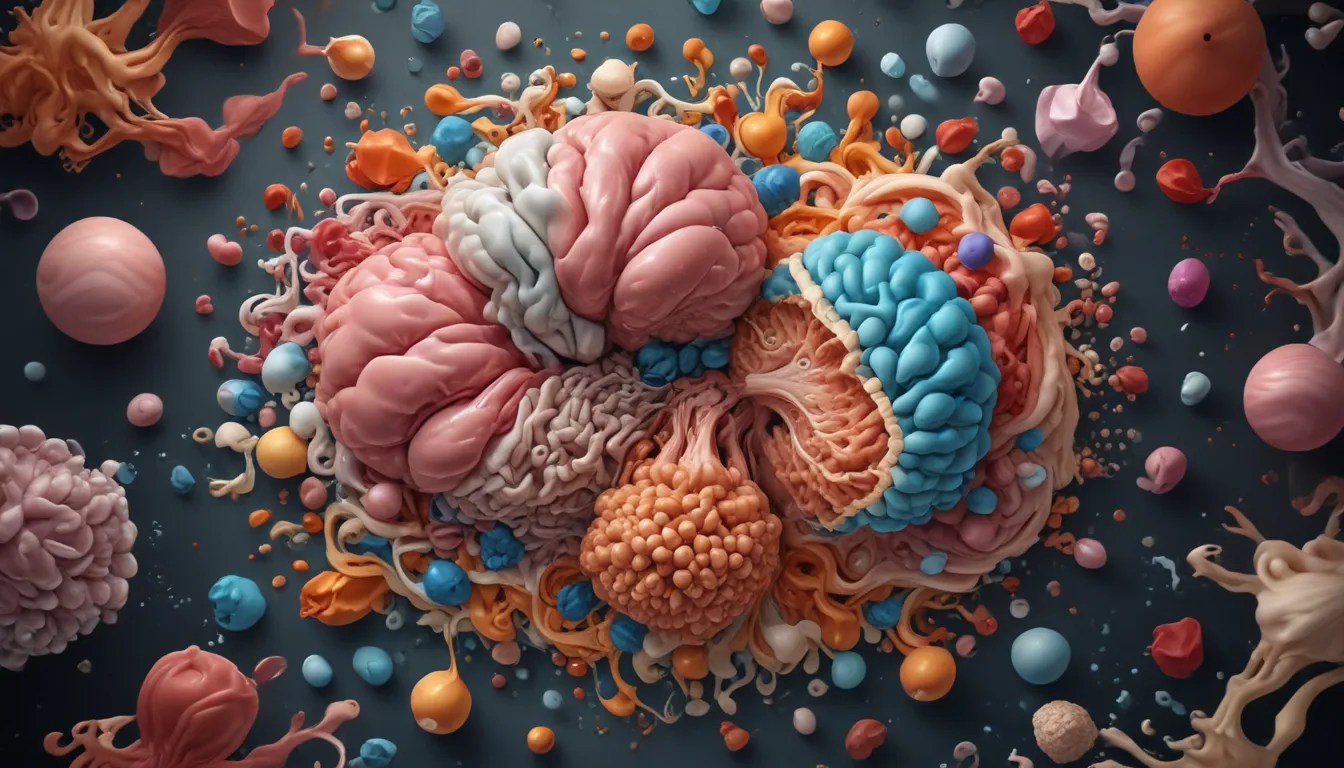A Note About Images: The images used in our articles are for illustration purposes only and may not exactly match the content. They are meant to engage readers, but the text should be relied upon for accurate information.
Welcome to the intriguing world of protein phosphorylation, a fundamental process in biology that governs a multitude of cellular activities. By adding a phosphate group to proteins, this post-translational modification can either activate or deactivate their functions, playing a crucial role in signal transduction, cellular communication, and enzyme activity regulation. Let’s embark on a journey to explore the wonders of protein phosphorylation and uncover some astonishing facts that highlight its intricate mechanisms and significance in keeping our cellular machinery functioning optimally.
Understanding Protein Phosphorylation: A Cellular Light Switch
- Protein phosphorylation acts like a cellular light switch, turning proteins on or off to control their activity levels and regulate cell signaling pathways.
- This process is essential for cells to adapt to changing environments and respond to signals, showcasing its crucial role in maintaining cellular homeostasis.
- Scientists can leverage their understanding of protein phosphorylation to develop targeted therapies for diseases like cancer and neurodegenerative disorders, unlocking new treatments and improving patient outcomes.
Delving Deeper into the World of Protein Phosphorylation
Protein Phosphorylation in Cell Signaling
- Protein phosphorylation is a fundamental cellular process that regulates various biological functions by adding a phosphate group to protein molecules.
- Acting as a switch, protein phosphorylation turns proteins on or off, controlling their activity levels and enabling cells to respond to extracellular signals and adapt to changing environments.
The Role of Protein Kinases in Mediating Phosphorylation
- Protein kinases, enzymes that catalyze the phosphorylation of proteins, transfer phosphate groups from ATP to specific target amino acids in the protein.
- With over 500 protein kinases encoded in the human genome, each kinases play a critical role in regulating cellular processes such as growth, metabolism, and differentiation.
Dynamic Effects of Phosphorylation on Protein Function
- The addition of a phosphate group to a protein can activate or inhibit its function, enabling precise regulation of protein activity to maintain cellular homeostasis.
- This dynamic regulation allows cells to fine-tune their protein activity levels in response to cellular signals and environmental cues.
Reversibility of Protein Phosphorylation
- Protein phosphorylation is a reversible process controlled by the balance between protein kinases and phosphatases.
- Phosphatases remove phosphate groups from proteins, reversing the effects of phosphorylation and allowing for precise regulation and rapid response to cellular signals.
Implications of Phosphorylation in Disease Pathology
- Altered phosphorylation patterns are implicated in various diseases, including cancer, diabetes, and neurodegenerative disorders.
- Dysregulation of protein phosphorylation can lead to aberrant signaling, contributing to disease progression and highlighting the potential for targeted therapeutic interventions.
Unveiling the Tools and Applications of Protein Phosphorylation Research
Mass Spectrometry: A Powerful Tool for Studying Phosphorylation
- Mass spectrometry-based proteomics has revolutionized the field of protein phosphorylation research, enabling the identification and quantification of phosphorylation sites in complex protein mixtures.
- This technique has provided insights into the global regulation of phosphorylation and the discovery of novel phosphorylation events, advancing our understanding of cellular signaling networks.
Therapeutic Potential of Targeting Protein Kinases
- Protein kinases have emerged as promising therapeutic targets due to their critical roles in cellular processes and disease pathways.
- Inhibitors that selectively target specific kinases have been developed for the treatment of cancers and other diseases, aiming to restore normal cellular signaling and inhibit disease progression.
Exploring Diverse Functions of Protein Phosphorylation
Protein-Protein Interactions and Conformational Changes
- Phosphorylation can modulate protein-protein interactions by inducing conformational changes and creating docking sites for interaction partners.
- This dynamic regulation allows for the formation or disruption of protein complexes in response to cellular signals, playing a critical role in many biological processes.
Multi-Site Phosphorylation and Regulation of Protein Function
- Some proteins undergo multi-site phosphorylation, allowing for intricate regulation of protein function through combinatorial codes.
- This complexity expands the regulatory capacity of phosphorylation in cellular processes, modulating complex signaling networks and fine-tuning protein activity.
Protein Degradation Signaled by Phosphorylation
- Phosphorylation can mark proteins for degradation through ubiquitin-proteasome or lysosomal pathways.
- Specific phosphorylation events target proteins for recognition by E3 ligases, leading to their ubiquitination and subsequent proteasomal degradation, ensuring the turnover of regulatory proteins.
Conclusion: Embracing the Complexity and Significance of Protein Phosphorylation
- Protein phosphorylation is a fascinating and intricate process that plays a crucial role in regulating various cellular functions, from enzyme activity to signal transduction pathways.
- Understanding protein phosphorylation not only enhances our knowledge of cellular biology but also opens up new avenues for therapeutic interventions, paving the way for innovative treatments for diseases.
- As researchers continue to unravel the mysteries surrounding protein phosphorylation, we can anticipate even greater breakthroughs in the field of biology, revolutionizing our understanding of cellular communication and disease mechanisms.
FAQs: Exploring Common Questions About Protein Phosphorylation
- What is protein phosphorylation and why is it important?
- How is protein phosphorylation regulated, and what are the consequences of improper phosphorylation?
- Are there drugs that target protein phosphorylation pathways?
Unraveling the complexities of protein phosphorylation offers a deeper insight into the intricate world of cellular processes. By studying this fundamental biological mechanism, scientists can unlock new possibilities for therapeutic interventions and disease management. Dive into the realm of protein phosphorylation and discover the key to unlocking the mysteries of cellular function and regulation.






